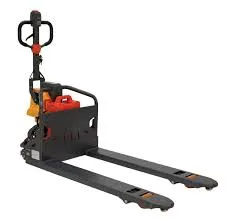



(fall protection fall arrest)
Working at elevation demands rigorously engineered solutions to prevent catastrophic incidents. Fall protection fall arrest systems constitute the final barrier between workers and life-altering impacts when operating beyond safe ground levels. Unlike simple guardrails or warning systems, these active intervention technologies engage physics to decelerate falls within survivable limits—typically arresting descent within 4 feet while maintaining impact forces below 1,800 pounds. Industrial applications require comprehensive understanding of anchor strength requirements, clearance calculations, and proper harness fitting to transform theoretical safety into practical survival assurance.
Fall restraint systems proactively prevent users from reaching fall hazards altogether through fixed-length lanyards and strategic anchor placement. These solutions dominate flat-surface environments like rooftops where maintaining balance remains feasible. Conversely, fall arrest equipment functions reactively—deploying energy absorbers and shock-absorbing lanyards that activate after a fall begins. This critical distinction dictates application suitability: restraint shields against accidental approaches to edges, while arrest systems protect during deliberate work over voids like bridge maintenance or silo inspections.
OSHA statistics reveal falls remain the construction industry's leading cause of death, contributing to 366 fatalities annually. Analysis by the Bureau of Labor Statistics shows most incidents occur below 30 feet—heights frequently misjudged as 'low-risk'. Consider these insights:
The National Safety Council estimates comprehensive fall programs yield $6 ROI per dollar invested through incident reduction alone.
Modern materials science has transformed fall management beyond basic cables and belts. Leading manufacturers now integrate:
Third-party testing by UL Labs confirms contemporary shock packs reliably limit forces to ANSI-compliant thresholds even during 400-pound dynamic load simulations.
| Manufacturer | Product Range | Key Technologies | Max Capacity | Compliance | Weight Tolerance |
|---|---|---|---|---|---|
| 3M DBI-SALA | Full-body harnesses, SRLs | Roll-Lok SRL, TetherTrack | 420 lbs | OSHA 1926, ANSI Z359 | 130-420 lbs |
| Honeywell Miller | Positioning systems, rescue kits | Ceros dampener, Sentry SRL | 400 lbs | EN 361, CSA Z259 | 130-400 lbs |
| MSA Safety | Vertical systems, netting | V-Flex absorber, Armor-Tether | 425 lbs | OSHA 1910, ANSI A10 | 130-425 lbs |
| Capital Safety | Customizable solutions | SmartShock, FAST Technology | 310 lbs | ANSI Z359.14 | 130-310 lbs |
Effective implementation requires addressing environmental variables. Telecommunication tower technicians face different challenges than bridge painters or warehouse maintenance crews. Optimal solutions integrate three structural considerations:
Refinery applications exemplify tailored configurations where stainless steel components resist corrosion while intrinsically safe materials mitigate spark risks near flammable vapors.
Establishing compliant protection extends beyond equipment procurement. Leading enterprises deploy comprehensive protocols encompassing scheduled equipment audits, virtual reality training simulations, and mandatory rescue capability verification. Data from OSHA's Strategic Partnership Program shows sites implementing these layered protocols reduced fall incidents by 76% over three-year periods. With regulatory standards constantly evolving under ANSI Z359 updates, partnering with certified fall protection specialists ensures systems meet current engineering benchmarks while accommodating operational complexities unique to each elevated workspace environment.

(fall protection fall arrest)
A: Fall protection fall arrest is a safety system designed to stop a worker's fall before impact, typically using harnesses and anchors. It mitigates fall-related injuries by distributing forces. Employers must ensure proper training and equipment compliance.
A: Fall arrest protects after a fall occurs with devices like harnesses, while fall restraint prevents falls entirely by restricting access to hazards. The choice depends on job site risks and worker movement needs.
A: Fall arrest fall restraint is ideal when both reactive protection and proactive prevention are needed, such as in high-risk edge work. Combining systems maximizes safety, reduces injury rates, and meets regulatory standards like OSHA.
A: Essential components include an anchor point, full-body harness, lanyard or lifeline, and a deceleration device. Regular inspections ensure integrity, and training covers correct usage to prevent failures.
A: Yes, OSHA mandates fall arrest and fall restraint systems under standards like 1910.140 and 1926.502, requiring inspections, training, and equipment certifications. Non-compliance can lead to fines and safety hazards.



